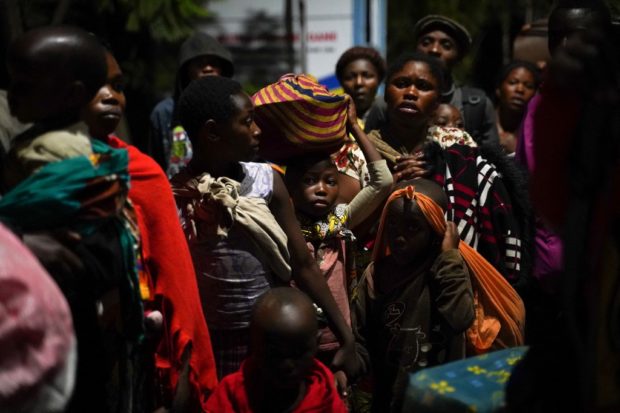DR Congo announces ‘progressive return’ to volcano city

Congolese people carry their belongings as they flee from Goma, Democratic Republic of Congo (DRC), after the Nyiragongo volcano erupted, at the border point known as “Petite Barriere” in Gisenyi, Rwanda, on May 23, 2021. (Photo by Simon Wohlfahrt / AFP)
Around two-thirds of Goma’s 600,000 population left after an evacuation order was issued last month, although thousands have since streamed back, defying official warnings.
“Today, we decided on the progressive return of displaced people in line with a plan which will be issued by the military governor,” Prime Minister Jean-Michel Sama Lunkonde Kyenge told a press conference in Goma.
“Compared with two weeks ago, the situation in terms of seismic activity has improved. We now able to contemplate the future with less worry,” he said.
FEATURED STORIES
The military governor of North Kivu province, General Constant Ndima, told the press conference that schools would reopen on June 14.
Goma lies on the shores of Lake Kivu, just a dozen or so kilometers (nine miles) from Mount Nyiragongo, Africa’s most active volcano.
Nyiragongo suddenly erupted on May 22, spewing out two rivers of lava before stopping the next day.
But powerful aftershocks followed, causing several buildings to collapse and triggering panic among the population, while scientists said they feared a potentially catastrophic eruption under the lake.
In response, Ndima on May 27 ordered the evacuation of 10 out of the city’s 18 districts.
Some 120,000 people arrived in the town of Sake, about 25 kilometers (15 miles) to the west, while thousands more fled to the Rwandan town of Gisenyi, just across the border to the east.
However, large numbers have returned informally, and by the middle of last week, the city center seemed as it had almost returned to normal.
The city’s airport reopened on Saturday.
Thirty-two people died from lava burns or asphyxiation after the May 22-23 eruption, and two more died in accidents during the exodus.
Between 900 and 2,500 homes have been destroyed.
Lukonde Sama, who came to Goma with around a dozen ministers, said the health authorities would be vigilant about preventing the risk of cholera, tuberculosis, and other diseases during the return process.
“Areas that have been ravaged by the volcano should no longer be occupied by the public,” he added.
“We should draw the lessons of the 2002 and 2021 eruption to ensure that people are never again placed so close to danger.”
Around 100 people died in the January 2002 eruption, which smothered swathes of eastern Goma and half of the airport’s runway with lava.
Nyiragongo’s deadliest eruption, in 1977, claimed more than 600 lives.
Read Next
EDITORS’ PICK


Subscribe to INQUIRER PLUS to get access to The Philippine Daily Inquirer & other 70+ titles, share up to 5 gadgets, listen to the news, download as early as 4am & share articles on social media. Call 896 6000.
